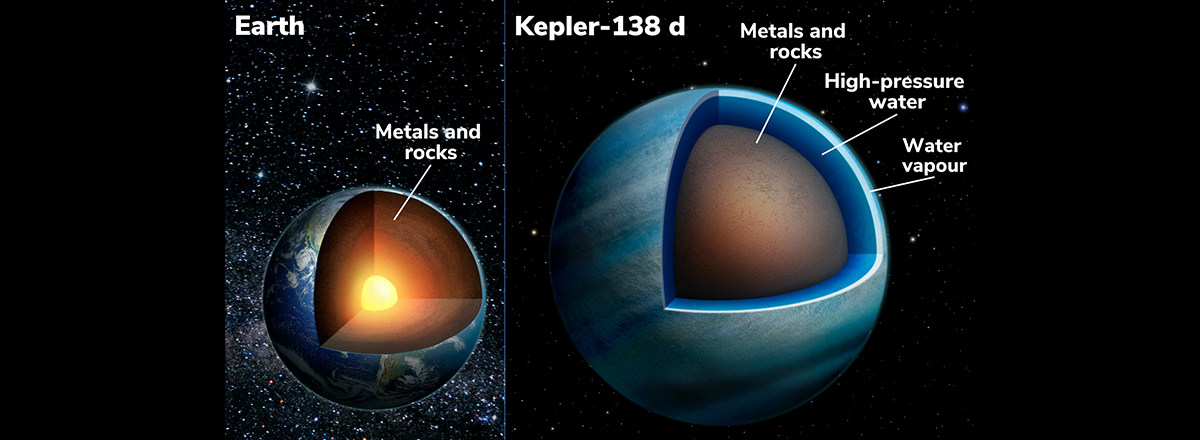Astronomers Discovered Two Exoplanets That May Be Mostly Water
Scientists hope the planets orbiting the red dwarf Kepler-138 won't be the last of its kind to be discovered. As instruments and detection techniques improve, more aquatic worlds like Kepler-138c and Kepler-138d are likely to be discovered.

Astronomers from the University of Montreal have found two exoplanets that consist largely of water – this is the first scientific evidence that giant water worlds can exist.
According to scientists, these exoplanets – Kepler-138c and Kepler-138d – orbit a red dwarf in the constellation Lyra, which is 218 light years away from Earth. They were observed using the Hubble and Spitzer space telescopes.
During observations, water was not detected directly. Instead, by comparing the size and mass of the planets with existing models, scientists concluded that a significant fraction of their volume (up to half) must consist of materials lighter than rock, but heavier than hydrogen or helium. In this case, water is the most likely candidate material of this nature.
The volumes of Kepler-138c and Kepler-138d are more than three times larger than Earth's, and the mass of each planet is twice as large. Astronomers say both planets resemble larger versions of Europa or Enceladus, water-rich satellites that orbit Jupiter and Saturn.
Researchers warn that the planets are unlikely to have oceans like those on Earth because the temperatures in their atmospheres are probably above the boiling point of water. They likely have thick, dense atmospheres made up of steam, which could potentially contain high-pressure liquid water.

